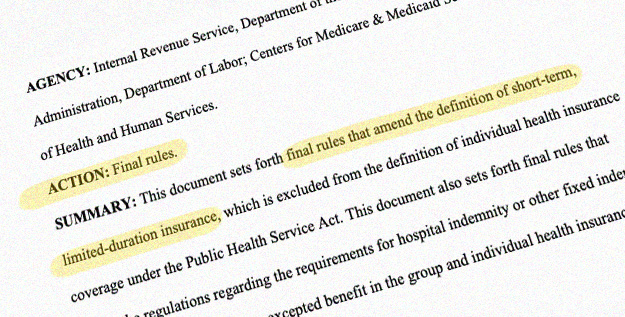How Many Backlinks Do You Need? – Technologist
Building links is one of the most important SEO tactics. When Google’s bots crawl websites, they focus on incoming links to rate a site’s authority. High-quality backlinks drive traffic to your website and often lead to increased revenue. Despite this, more than 55% of websites don’t have any backlinks at all. Of those that do, nearly 30% have fewer than three links. So, how many backlinks do you need to rank?
Here, we dig into this question and go over how you can set realistic and effective goals for adding backlinks to your site.
What Is a Backlink?
First, let’s define a backlink. Simply put, a backlink is a link on an external website that leads to a page on your own website. They are considered the strongest “referral” you can get online, especially if they come from websites that are already excelling in Google’s search engine results pages.
How Many Backlinks Do You Need To Rank in the Top Spots?
So, how many backlinks should you look for as a baseline? As a very general rule, a good website has 40-50 backlinks to its homepage and 0-100 to each subpage.
Too few backlinks mean Google’s robot crawlers won’t boost your pages in search engine results. However, too many can look like you’re receiving backlinks unethically, so they won’t be counted, either. The suggested range of backlinks is so wide because not every link is equal.
How many backlinks you really need for an individual page depends on a few factors:
- How many links competitors to your page already have
- Your website’s domain authority (your existing credibility in the eyes of search engines)
- The quality of the links you are adding
We take a closer look at these considerations below.
What Factors Determine How Many Backlinks I Need To a Page?
There is no magic number of links that guarantees a top-ranking page. Instead, consider the unique needs of each page you’re hoping to build up.
Domain Authority
Your domain authority determines how strong your domain is overall. Domain rating and authority scores are important as well. The rating shows a website’s power in its backlink profile, while the authority score focuses on the SEO performance of a website overall. These all work on 100-point scales: The higher the number is, the more authoritative the domain is.
This is important for two reasons:
- Firstly, the higher your domain authority, the fewer backlinks you may need to beat the current top-ranking results.
- Secondly, a website with a high domain authority typically carries more weight when it links back to your site compared to a website with less authority.
This is part of what separates cheap “black hat” linking techniques from high-quality, credible linking services. A few high-quality backlinks easily outshine dozens of low-quality referrals.
Relevance
Search engines are better than ever at spotting spammy, unhelpful practices. This includes links that make no sense. If the sites that link back to you have nothing to do with what’s being discussed, it looks bad to web crawlers and likely won’t benefit you. Consider the following examples of relevant and irrelevant links:
- Irrelevant: A website focused on cooking linking back to a blog on HIPPA compliance.
- Relevant: A website focused on health and wellbeing linking back to a blog on the best vitamin supplements for women.
- Irrelevant: A website focused on pet care linking back to the services page of a car mechanic.
- Relevant: A dentist linking to an orthodontist’s blog on when to consider braces.
This seems intuitive, but it is another feature typically missed by low-quality link builders. Remember it’s all about being helpful to real people browsing the web. Relevant links are the kind that could be naturally attracted with high-quality content, but they can also be added via the outreach of credible link builders.
Keyword Difficulty and Competitiveness
Like domain authority, keyword difficulty works on a 100-point scale. Winning a keyword with a high difficulty (aka. a lot of competition online) is always going to be more difficult, and often more expensive, than winning a low-competition keyword.
In addition to the difficulty of your keyword, you can use tools such as SEMrush to analyze how many backlinks the top-ranking results have. If the competitors to your page have dozens of referring domains, you’re probably going to need more backlinks to beat them.
Strategically selecting the content on your site that is already ranking for some keywords and has achievable competitors helps you get the most out of your link-building budget. This is part of why we suggest a consistent blogging plan for anyone hoping to improve SEO on their site. You need a lot of content to work with!
Internal Linking
The number of internal links a page receives impacts how many backlinks a page needs as well. Studies show that, like backlinks, internal links allow a website to rise in the ranks of Google’s search engine results pages. You’ll want to balance the number of backlinks you seek with a solid internal linking strategy.
Create internal links to pages that you want to rank the highest, making sure to use keywords in the anchor text. Ensure the links are from relevant content since the text surrounding the anchor text is also a factor in Google’s algorithms.
How Does My Overall Strategy Impact How Many Backlinks I Need?
Google encourages organic backlinks, but they can be hard to come by. A high-quality, white-hat linking strategy is a great solution, but to maximize your investment in each and every link, you need to consider how it fits your overall SEO strategy. Luckily, you don’t always need a ton of backlinks to find yourself in the top 10 on Google. If you want a better ranking with fewer links, choose three to five keywords to optimize on each page, focusing on those with low keyword difficulty scores. Use these keywords in the right HTML locations for Google’s bots to crawl.
Your content also needs to be relevant to the user’s search intent. Search your chosen keywords and look through the first few results to get an idea of what type of content Google is looking for. After you publish each page, add a few internal links that are relevant to your content. Finally, when you identify content that is close to performing well, work on adding high-quality backlinks.


